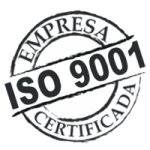![]()
Overview
Tyres play an integral role in defining the efficiency and smoothness of any motorcycle. The grip and movement of a tyre depends directly on the rubber compound and its rigidity. Both the raw material used and the design of the tyre is carefully considered and tested together with the conditions of the target market before manufacturing.
Our range of tyres focuses on both street vehicles as well as off-road vehicles. The range also includes tyres for commercial vehicles, moto-taxi and scooters.
We also supply an excellent range of natural rubber and butyl tubes.
CONTACT US
Quality Certification










Before the production begins, we work hard on research and development, from the rubber compound to the tread pattern thereby ensuring that the end product meets our client’s/clients’ expectations.
The compound which is a mixture of black carbon, rubber and certain accelerators in the Banbury is passed through rollers to achieve a uniform appearance. As the mix passes through rollers, the rubber compound is gradually cooled to provide the desired dispersion. Meticulous compound storage, coding and cooling systems guarantee uniform as well as foreign substance free materials for the extrusion process.
The compound is then passed through the tube extruder line and inner tube slicer in delicate, error free and controlled manner. Strict supervision of the tube curing presses (with different heating mediums) and the core fitting machine maintains good surface finish and ensures that the vulcanization process is carried out the right way.
Post the entire process; batch of tyres go under rigorous tests at ETDAC (Eastman Tyre Development and Analysis Centre) where both off road and street tyres are tested for high speed endurance, durability tested via plunger and tensile testing machines. They are also subjected to abrasion test, to measure resistance.
Another test includes, ash content test is done to measure organic material content.
In a nut shell, we ensure quality by
- Dimensional measurements of tyre overall width, tyre overall diameter, skid depth, etc
- Tyre strength test (plunger test)
- Endurance test
- High speed performance test & % dynamic growth test
- Physical properties of sidewall & rubber
- Tensile strength test
- Elongation test
After all tests, we move ahead on production of the entire lot.
CLICK ON MARKER TO LEARN MORE ABOUT THE PART OF THE TYRE
There are essentially two types of size marking used for motorcycle tyres:
- Imperial
- Millimetric
All of these marking systems describe the width (W), height (H) and rim diameter (dr) of a tyre size. The tyre aspect ratio drawing (on the Wheels and Rims) shows where these dimensions are measured from and the overall diameter (D).
The height of the tyre and hence its overall diameter (D) is controlled by the Aspect ratio (Ar).
Tyre sizes for all motorcycle tyres are expressed as:
Width/Aspect Ratio – W/R Construction or Speed Symbol Rim diameter – dr
For older Imperial sizes the Aspect ratio is 100% and not shown.
For Example:
3.50 x 18 = 3.50″ sectional width, 3.5″ sectional height — 18″ rim diameter
Perhaps the most easily understood size markings are the modern millimetric type.
For Example:
110 mm sectional width/110 x 90% = 99 mm sectional height — 18″ rim diameter
The effect of changing the aspect ratio is to change the overall diameter of the tyre:
120/110 – 18 D = 120 X 100% X 2 + (25.4 X 18) = 697.2mm
120/90 – 18 D = 120 X 90% X 2 + (24.4 X 18) = 673.2mm
120/80 – 18D = 120 X 80% X 2 + (25.4 X 18) = 649.2mm
Each of these rims is 120mm wide and fitted on an 18 ″ rim diameter, but as you can see there is a significant difference in overall diameters.
GENERAL INFORMATION:-
- In bad weather conditions, unloading at the time of receipt must be carried out in a covered area in any event, if water is found inside the tyres, it must be removed immediately.
- Unloading must not be carried out by dropping the tyres or by any other method which could damage the quality or visual aspect of the tyres.
- Tyres must not be moved by inserting the forks of a fork lift truck through the center of a tyre which could damage the bead area.
- Tyres must be stored inside a clean, dry and ventilated area, protected from direct sunlight or other source of artificial light (illumination must be realized with lamps of low ultraviolet and infrared emission).
- In the case of temporary external storage, the tyres must be covered (e.g. with an impermeable opaque material) and protected from contact with water and humidity.
TEMPERATURE:-
The storage temperature must be less than 35°C and preferably less than 25°C. A temperature greater than 50°C, especially if stock rotation is not sufficient, can result in accelerated forms of deterioration which reduces the durability of the tyre. Avoid contact with heaters and radiators. Very low temperatures in the storage area, do not necessarily affect quality but can affect rigidity of the tyre. In this case, they must not be deformed during movement. If tyres are to be fitted immediately as they are released from storage, it is necessary to keep them for a few hours in an area with a temperature of approximately 20°C.
OXYGEN, OZONE AND CHEMICAL SUBSTANCES:-
Appliances which generate ozone must not be introduced into the storage area. Gas and vapors from combustion which can generate ozone via photo-chemical processes must be excluded from the area. Neither the area nor the equipment in the storage location should have traces of solvents, lubricants, chemical products, acids, disinfectants, rubber solutions, etc. which could affect not only the visual aspect but also the characteristics of the product.
STORAGE OF INNER TUBES AND VALVES:-
Inner tubes that are supplied in single boxes, large box or wrapped in a plastic lm, it is always preferable to maintain the original packaging. As an alternative they can be stored by slightly inating and inserting it within a tyre, or piled up to a maximum height of 50 cm on racking shelves with a closed base. It needs to be ensured that valves don’t damage the surface of the tube, when squashed under the pressure of their own weight. Also, one needs to be sure that tubes do not overlap the edge of the plane on which they are stored to avoid accidental laceration. It is not recommended to store on slatted pallets because the pressure applied to the tubes will not be uniform. Do not hang inner tubes during storage. Valves should be stored in their packaging in a clean, well ventilated and dry location.
STOCK ROTATION:
The storage location must be organized in such a way as to guarantee constant stock rotation, limiting to the minimum storage period of tyres. Products which enter storage first must be the first to leave. Hence, using the principle First In – First Out.
It is vital that your vehicle has the correct tyre size fitted. You can check what sizes of tyre are suitable for your vehicle in the manufacturer’s handbook but you must ensure that your vehicle currently has these tyres fitted. You can check your tyre size on your tyre wall.
Covers designed to be used in all climates throughout the year.
The vehicle is mounted on a layer / film of water on the road surface and not on the road itself.
A multi-layer steel ring that helps to hold the tyre to the rim. This bead ensures adequate contact pressure between the tyre and the rim, the bead ensures air seal.
It is a coil of high-strength steel wire treated to improve bonding when encased in a hard rubber “matrix”. The wrap layers rotate around the bead and bond firmly to the frame when the cover cures.
The synthetic rubber used to create the pit covers virtually impervious to water and air.
Consisting of the layers, the heel area and the straps, this is the skeleton of the deck that sits under the treads and sidewalls.
The rim support structure consists of layers anchored to the bead on one side and running in a radius to the other side and anchored to the bead.
A code molded into the sidewall of the deck, which means the deck meets the US Department of Motors and Transportation vehicle safety standards.
The area of tyre tread that is in contact with the road surface.
The layer of rubber inside a tubeless tyre which stops air seeping out of the tyre during normal use.
The act of putting air into tyres.
Indicated on the Tyre Wall a standardised numerical guide that indicates the maximum weight a tyre can carry at the speed specified by its speed rating under various conditions.
This is the act of putting a tyre on a wheel and ensuring that the assembly is balanced. When you purchase new tyres, they need to be professionally mounted. It is also standard for the tyre dealer to charge a nominal fee for a valve stem.
An indication of the usable life of a tyre. A “high mileage” tyre is typically long-lasting.
Tyres selected by a vehicle manufacturer that best match tyre performance to vehicle performance characteristics. Also known as OE.
The diameter of the inflated tyre, without any load.
The distance between the outside of the two sidewalls, including lettering and designs.
Too much air in the tyre, resulting in premature wear in the centre of the tread.
Imperial measurement unit for air pressure.
The metal edge of the wheel on which the bead is seated supporting the tyre
The diameter of the rim (usually measured in inches and also known as the wheel size).
The distance between the two opposite inside edges of the rim flanges.
The energy required to keep a tyre moving at a constant speed. The lower the rolling resistance the less energy being used to keep the tyre moving.
A combination of raw materials blended according to carefully developed procedures. The rubber compound is specially adapted to the performance required of each type of tyre.
The standardised index which is used to indicate the maximum speed a tyre can sustain carrying the specified load in the load index under the conditions specified by the tyre manufacturer.
This is where the sidewall and the tread meet on the tyre.
This refers to the area between the bead and the start of the tread.
A term used to describe the force of friction between the drive wheel and the road.
This is the part of the tyre that comes into contact with the road.
A “mix” or combination of raw materials used in the manufacture of the rubber compound of the tyre itself. By varying the percentage or the composition of the materials applied, manufacturers can produce different tyres for various purposes and with different performances.
The area on the tyre where information about the tyre is displayed.
An object’s resistance to stretching or breaking when placed in tension. Steel belts in a tyre are characterized and compared based on their tensile strength.
Also called pneumatic tyre, a precisely engineered assembly of rubber, chemicals, fabric and metal, designed to provide traction, cushion road shock and carry a load under varying conditions.
Turning or twisting effort, usually measured in lb-ft or Newton metres.
The life of a tyre before it is pulled from service; mileage.
Allows the tyre to be inflated to the correct pressure. Valves are usually made of rubber, with a metal core assembly with a screw on dust cap. There are 2 standards lengths, short for most alloy wheels and long for steel wheels which have a plastic wheel trim.
The irreversible process of heating rubber under pressure to improve its strength and resilience.












